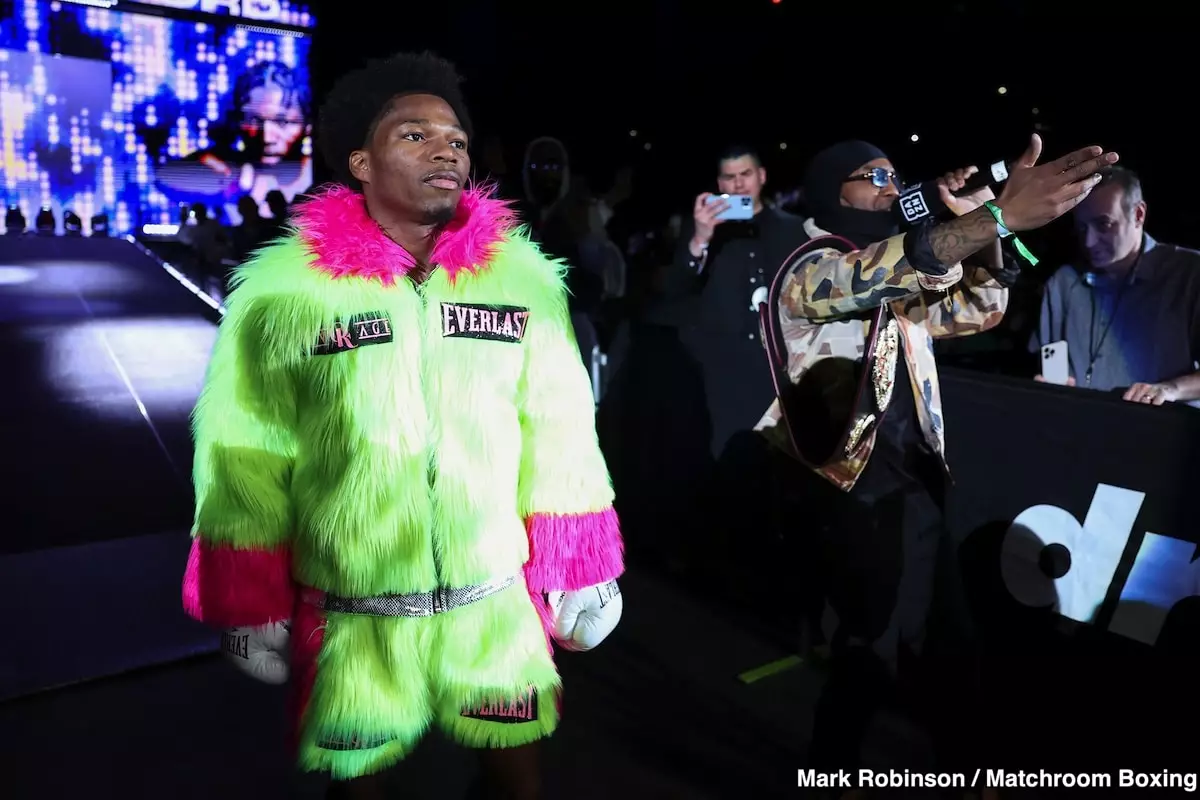The boxing world is currently embroiled in a tense debate spurred by Turki Alalshikh’s recent directive aimed at curbing non-engaging fighting styles, often described as “Tom and Jerry” bouts. The essence of this directive lies in the expectation for boxers to adopt a more aggressive and engaging fighting style, thereby discouraging those who rely on evasive tactics. However, as super featherweight contender Raymond Ford points out, this demand raises important questions about the nature of boxing and the responsibility of fighters in the ring.
Ford, holding a record of 17 wins, 1 loss, and 1 draw, with an impressive 13 KOs to his name, has openly criticized Alalshikh’s proposition. He argues that it is unreasonable to expect fighters to drastically alter their inherent fighting styles, especially when boxing is known for its physical dangers. The dynamic and often unpredictable nature of boxing means that every fighter brings their unique strategy to the ring, and attempting to impose uniformity threatens the sport’s integrity.
Understanding the Fighters’ Perspective
Ford’s reluctance to embrace Alalshikh’s philosophy emphasizes a critical aspect of boxing; each fighter must navigate their own path based on training, instincts, and personal style. Alalshikh’s direction raises a significant question: Should the entertainment value of a fight outweigh the safety and strategic freedom of the fighters? Ford argues that calling for a shift towards more aggressive fighting is, in essence, an “ignorant” stance that neglects the nuanced responsibilities athletes carry.
Adding depth to the debate, Ford asserts that turning boxing into a one-dimensional spectacle could compromise the sport. Boxers are often trained to adopt a certain strategy, and expecting them to immediately transition into a brawling style is not only impractical but could lead to increased injuries. The weight of this responsibility is heavy; fighters shouldn’t be pressured into risking their health and safety simply to cater to fans’ demands for more thrilling bouts.
The Fan Experience vs. Fighter Safety
The discontent surrounding the May 2nd event in Times Square, where A-side fighters opted for cautious, safety-first tactics, highlights the dilemma facing boxing. Fans were left disappointed by what they perceived to be underwhelming performances from major names like Devin Haney and Teofimo Lopez. The expectation was that these elite athletes would seize the moment and deliver memorable clashes worthy of their hefty paychecks. Instead, the reluctance to engage or take risks rendered the fights tedious and lackluster.
Yet, this critique should not overshadow the fundamental truth in Ford’s argument: boxing is a perilous sport. The crux of the issue lies in the balance that must be struck between providing electrifying entertainment for supporters and ensuring the fighters’ welfare. Encouraging boxers to brawl more ferociously could lead to an uptick in injuries, thereby counteracting the attractiveness of the sport.
Finding Common Ground in the Future of Boxing
For the health of boxing, a collaborative dialogue between promoters, fighters, and fans is essential. Alalshikh’s intentions may stem from a desire to rejuvenate the sport and attract larger audiences, but the solution cannot solely rest in altering fighter behavior. Instead, there should be an emphasis on nurturing a culture that celebrates diverse fighting styles while prioritizing safety.
Ford’s upcoming fight against Anthony Cacace represents a pivotal moment not just for him, but for the larger conversation about what boxing should embody. The outcome of this match could highlight the fractures within boxing; will Ford and Cacace engage in a more traditional and strategic exchange, or will they feel pressured to cater to Alalshikh’s vision of a more entertaining bout?
In the complex landscape of boxing, understanding and respecting stylistic choices is vital. As the sport evolves, discussions must prioritize both thrilling matchups and the seamless integration of safety protocols to ensure that all fighters can compete without risking their health or disrupting their personal fighting philosophies. Ultimately, boxing transcends entertainment; it is a testament to discipline, courage, and the embodiment of an athlete’s spirit.


Leave a Reply